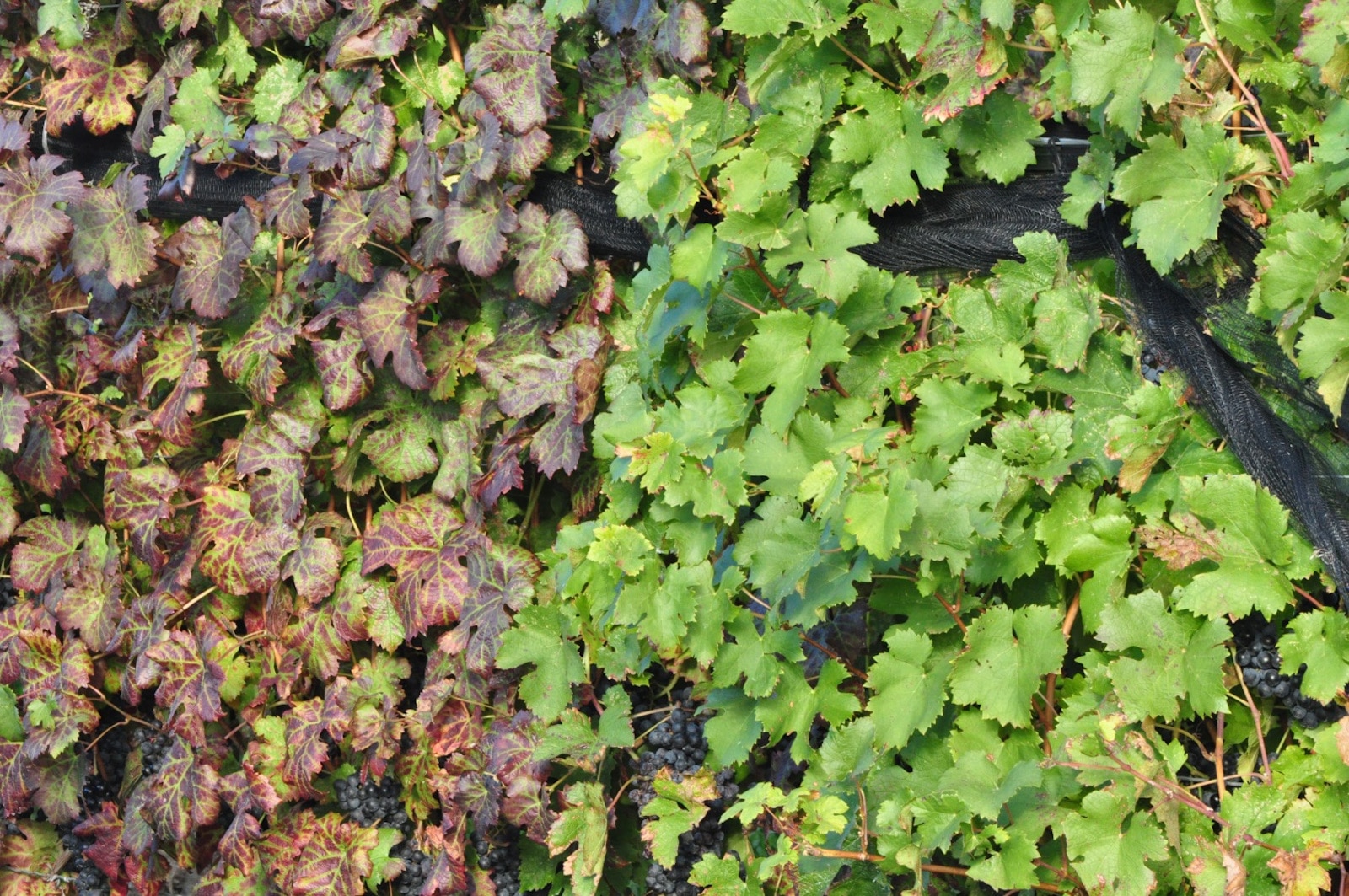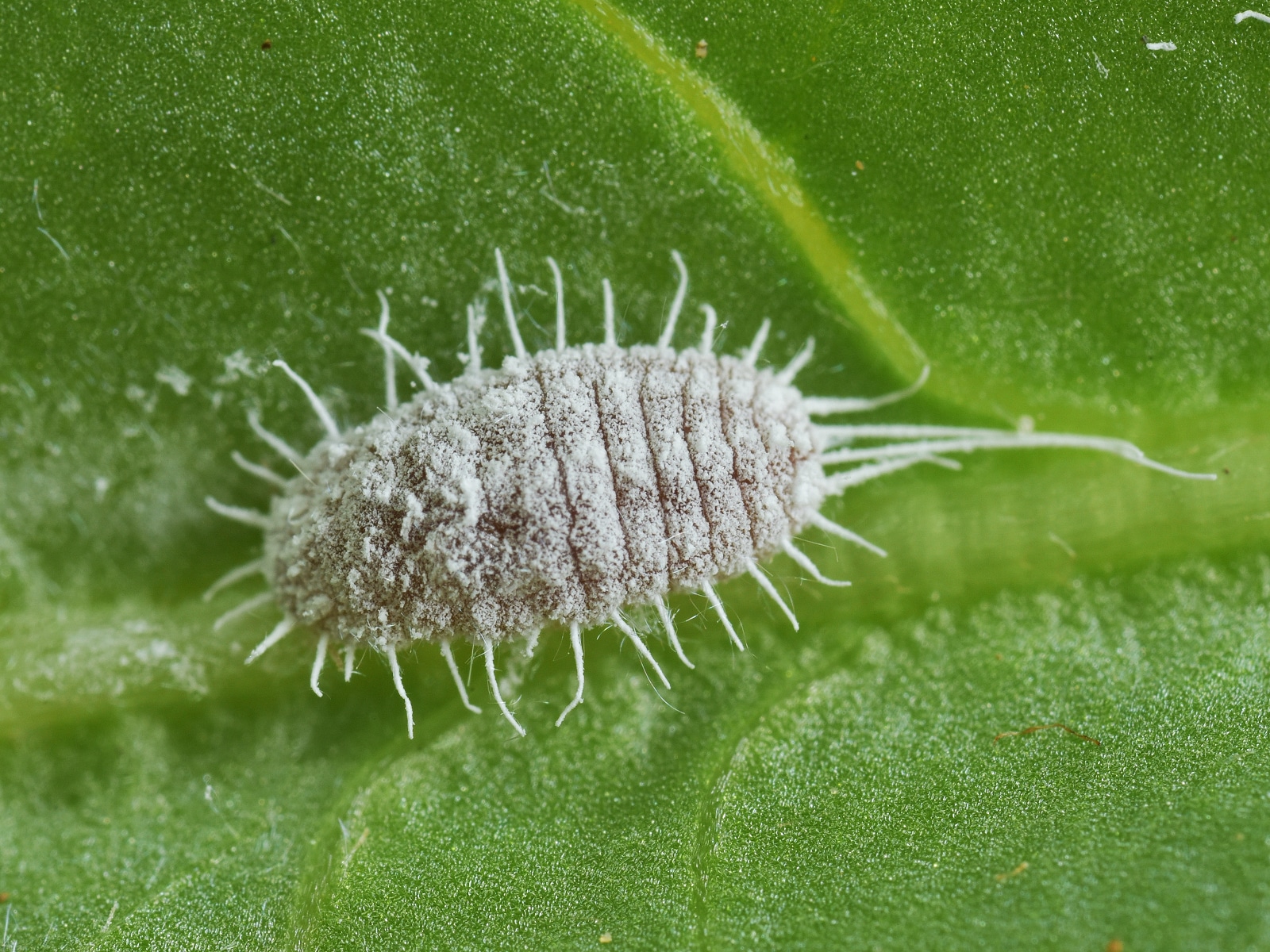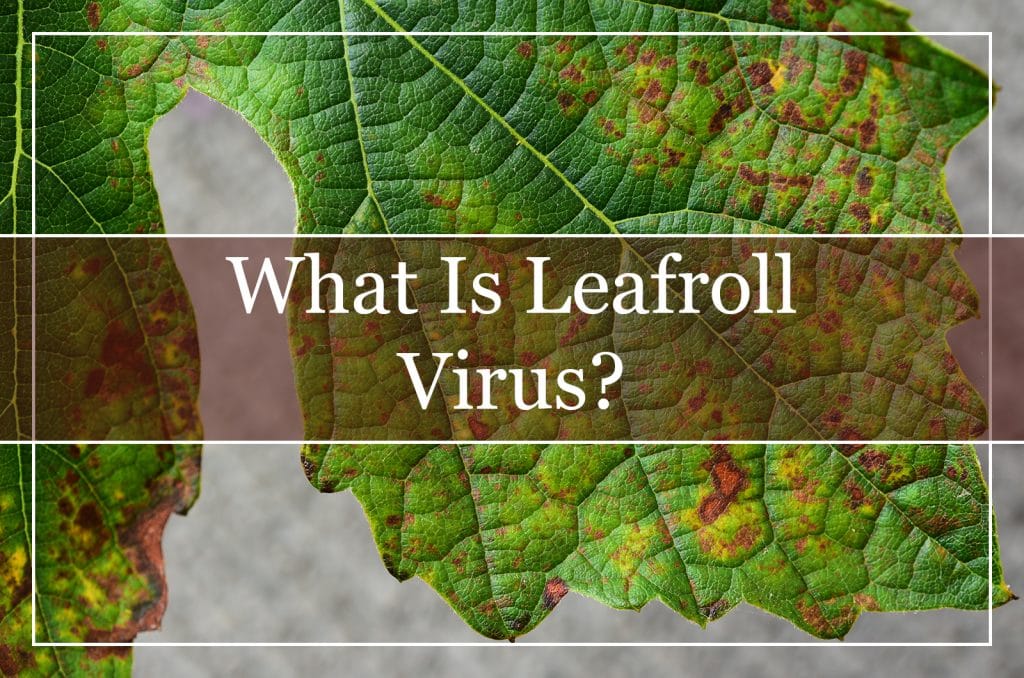Leafroll virus (LFV) is a serious grapevine disease and concerns viticulture on a worldwide level. Leafroll is named after the foliar symptoms observed on grapevine varieties from the end of August to autumn. It is also referred to as Grapevine Leafroll-Associated Virus (GRLaV).
Most grapevines affected by leafroll see reduced yields and quality of fruit. Additionally, they suffer reduced production and quality of wood used for propagation purposes. The disease caused by GRLaVs is associated with graft incompatibilities, as well. Bear in mind that except for prevalent symptoms, symptomless infections can also occur. The infected grapevine cultivars act as a virus repository for other sensitive vine varieties.
What Are the Symptoms?
Foliage
One of the most significant leafroll symptoms is the reddening (for red varieties) or yellowing (for white varieties) of the leaf tissue between the veins and the downward rolling of grapevine leaves. On that note, the discoloration might not be so clearly seen in white varieties. Also, for the most part, the veins remain green. However, it is not uncommon to observe some discoloration of the leaf tissue in some vine varieties.
Reduced Vine Growth
Grapevines struggling against leafroll have reduced growth, which results in smaller canopies. In addition, this results in reduced cane pruning weight and a reduction in cane circumference and length. As such, this affects the quality of wood for propagation. The disease also results in grapevine decline and reduced lifespan of the affected vineyards. That is disastrous for winemakers and grape growers.
Fruit
Leafroll affects fruit quality. In fact, it reduces color in red varieties and aromas, sugars in both red and white varieties. On top of this, the virus increases titratable acidity. Fruit ripening is delayed. This can be fatal for grapevines growing in climates where full fruit maturity is delayed due to a shorter growing season and lower temperatures. Winemakers have observed that vines affected by leafroll see up to 50% yield losses.
Grafting Issues
As previously mentioned, graft incompatibilities have been associated with infection by GRLaVs and leafroll disease. Decline or even death of the grafted scion is common among grapevines infected by the virus.

Grape Varietal Susceptibility
Depending on the variety, diverse differences in symptom severity can be observed and are attributed to variation in grapevine susceptibility, tolerance, and resistance to GLRaV infection. For instance, Vitis vinifera varieties and clones are more susceptible than the other Vitis species and hybrids due to the rootstocks remaining symptomless.
Take, for example, infected Cabernet Franc, Chardonnay, and Pinot Noir. They show the aforementioned classic LRV symptoms, while Riesling, on the contrary, displays few infections.
Furthermore, variance in symptom severity can be associated with a particular GLRaV species and strain variation within the said GRLaV species. Temperature is also a factor that determines the intensity of leafroll disease expression. Regrettably, for grape growers, after a grapevine has been infected, it takes up to 12 months or more to show symptoms associated with GLRaV.
How Is Leafroll Virus in Grapes Spread?
GRLaVs are not mechanically transmitted via pruning equipment or grape harvesters and do not seem to be transmitted by touch, either. Seed transmission has never been reported as a cause either, as the virus is restricted to the phloem.
Therefore, GRLaV species transmit from one another via grafting and propagation. Graft transmission can even occur from scion to rootstock and the other way round. Leafroll disease is also transmittable by insect pests, such as mealybugs and even scale insects. Some of the most common insects responsible for the transmission of the virus are the long-tailed mealybug (P. longispinus), obscure mealybug (P. viburni), citrophilous or scarlet mealybug (Pseudococcus calceolariae), grapevine scale (Parthenolecanium persicae), and nigra scale (Parasaissetia nigra) among others.
Moreover, because virus concentration is low, the distribution between grapevines at certain months of a year is uneven, especially during the first season after an infection occurrence. GRLaV diseases take up to 12 months to spread and move from the cordons and shoots of the vine.
How Do you Treat Leaf Roll Virus?
Over the world, such as in Australia, there have been established certification schemes. These aim to reduce the spread of grapevine diseases by offering pathogen-tested planting material. The healthy grapevine material is scanned by wine professionals and scientists for leafroll virus diseases via visual inspection and relevant diagnostic testing for viruses. This high-health material is encouraged for vine replacement and general vineyard establishment, as they contribute to improved sustainability of the viticulture, and subsequently, the wine industry.

Since leafroll disease spreads quickly, vineyards must be monitored occasionally for the presence of virus-associated diseases. If the grapevines appear to have been infected by the virus, diagnostic testing is done to confirm GRLaVs presence. Afterward, wine growers remove the infected vines in an effort to reduce the risk of disease spreading in the vineyard. On that note, vineyards are monitored and treated for the long-tailed mealybug, an insect pest that transmits GLRaVs to the vines.
Since grapevines can be symptomless, active and frequent virus testing is recommended before working with a new vine. So, if a wine has not been purchased from a nursery with a valid certification scheme, then it should be tested for LRV as soon as possible. As mentioned above, infected grapevines that do not display symptoms act as a virus reservoir for sensitive neighboring vines and varieties.
Diagnostic Testing is Indispensable to Vineyard Protection
What is more, grapevines are misdiagnosed with the disease. Sometimes, phosphorous and magnesium deficiencies induce symptoms similar to the leafroll virus, confusing wine growers. Therefore, simple visual inspection is not enough to guarantee safe and accurate pathogen detection. Active diagnostic testing, on the other hand, seems indispensable in confirming the presence of GRLaVs.
Apart from diagnostic testing, another method to get rid of infected nursery stocks is the so-called shoot tip culture. The growing shoot tip (meristem) rarely gets affected by the virus, even if the rest of the plant has been infected. The shoot tip material is removed from the rest of the vine and cultured to re-grow new, virus-free vines. However, this is essentially time-consuming and highly costly, and thus, not many grape growers choose it. Plants that have grown from the clean material undergo continuous diagnostic testing for viral infections.
Treating the vines with heat shortens the virus spread by enabling said vines to produce extra cultural material. In fact, temperature conditions of 105°F (40°C) make LRV inactive. The grapevine outgrows the disease so that the shoot tip is technically safe from infection. Several viticulturists, though, believe that the intense heat causes variation and mutation from the original plants. As such, extended testing to guarantee stability adds an additional expense to this temperature treatment.
Finally, a few studies suggest that potentially grapevine virus infection may offer some benefits, such as seedless cultivars and improved crispness, color, and even grape weight.







